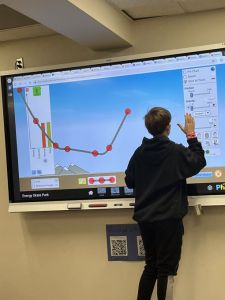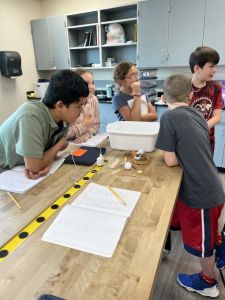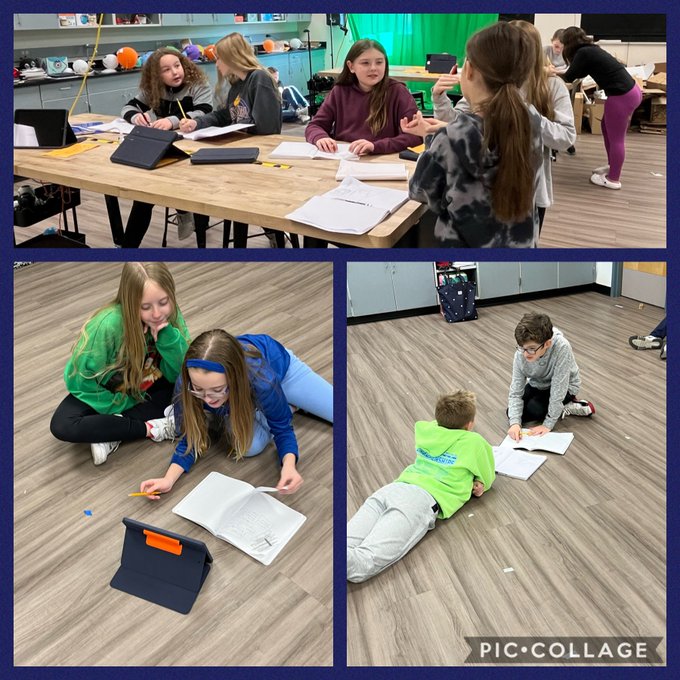While most people ring in the New Year with resolutions in January, I prefer to kick off my resolutions at the start of the school year. This year, my mission is clear: to help my students build stamina and resilience in our STEM class. We’re calling it increasing student STEM-ina. (See what I did there?) Here’s the plan, broken down into three actionable steps.
Step 1: Foster a Growth Mindset

From day one, it’s crucial to foster a growth mindset in your students. One way to do this is by starting the year with a powerful book that sets the tone. One of my favorites is The Most Magnificent Thing by Ashley Spires. This book embodies the engineering and design process and teaches a valuable lesson about dealing with failure. The story follows a young girl who envisions an incredible invention but struggles to get it just right. After several attempts, she becomes frustrated and nearly gives up. However, by taking a walk to clear her head, she learns to manage her frustration and eventually succeeds.
This story offers a perfect opportunity to introduce Focused Attention Practices to your students. Teach these practices as a whole class until they become second nature. For example, my favorite practice involves imagining breathing in your favorite color and letting it fill your entire body. Hold your breath for a moment, then slowly breathe out your least favorite color, taking all the bad feelings and frustrations with you. More focused attention practices can be found here.
Step 2: Goal Setting with SMART Goals
The beginning of the year is the ideal time for goal setting. One effective approach is using SMART goals, which stand for Specific, Measurable, Achievable, Relevant, and Time-bound. Help your students set goals that fit these criteria. A worksheet to get you started can be found here. If students aren’t sure where to start, encourage them to think about something they’d like to master but haven’t yet. There’s incredible power in the word “yet,” and the pride that comes with achieving a goal is unmatched!
“There’s incredible power in the word “yet,” and the pride that comes with achieving a goal is unmatched!”
Step 3: Normalize Struggle
It’s important to normalize struggle in the learning process. Share stories of famous scientists, engineers, and mathematicians who faced significant challenges before finding success. Instead of the usual tale of Edison’s lightbulb, consider sharing stories about Mary Anning, George Washington Carver, and Jane Goodall. When things go awry in your classroom, model perseverance by talking students through your process of overcoming obstacles.
“When things go awry in your classroom, model perseverance by talking students through your process of overcoming obstacles.”
Engaging Challenges to Start the Year

Engage and excite your students from the start with interactive challenges. Use these challenges to teach classroom procedures instead of having students sit and listen to a list of rules. Kick off the day with a bell ringer that includes a puzzle or brainteaser to help students reset their brains from previous classes and stimulate their problem-solving skills.
Begin with small group “mini-challenges,” like figuring out how to “walk” through a sheet of paper using only a sheet of copy paper and scissors. Encourage students to keep trying until they figure it out. This is a great time to use focused attention practices when things get tough. Other fun challenges include creating the longest possible paper chain or designing marble mazes on paper plates to stump their classmates. These activities not only introduce students to the location of supplies and guidelines for handling tools but also set expectations for cooperative learning groups.
Starting the school year with these strategies will not only build your students’ STEM-ina, but also create a classroom environment where growth, resilience, and perseverance are the norms. Here’s to a magnificent school year ahead!
Resources
Please login or register to claim PGPs.
Alternatively, you may use the PGP Request Form if you prefer to not register an account.



